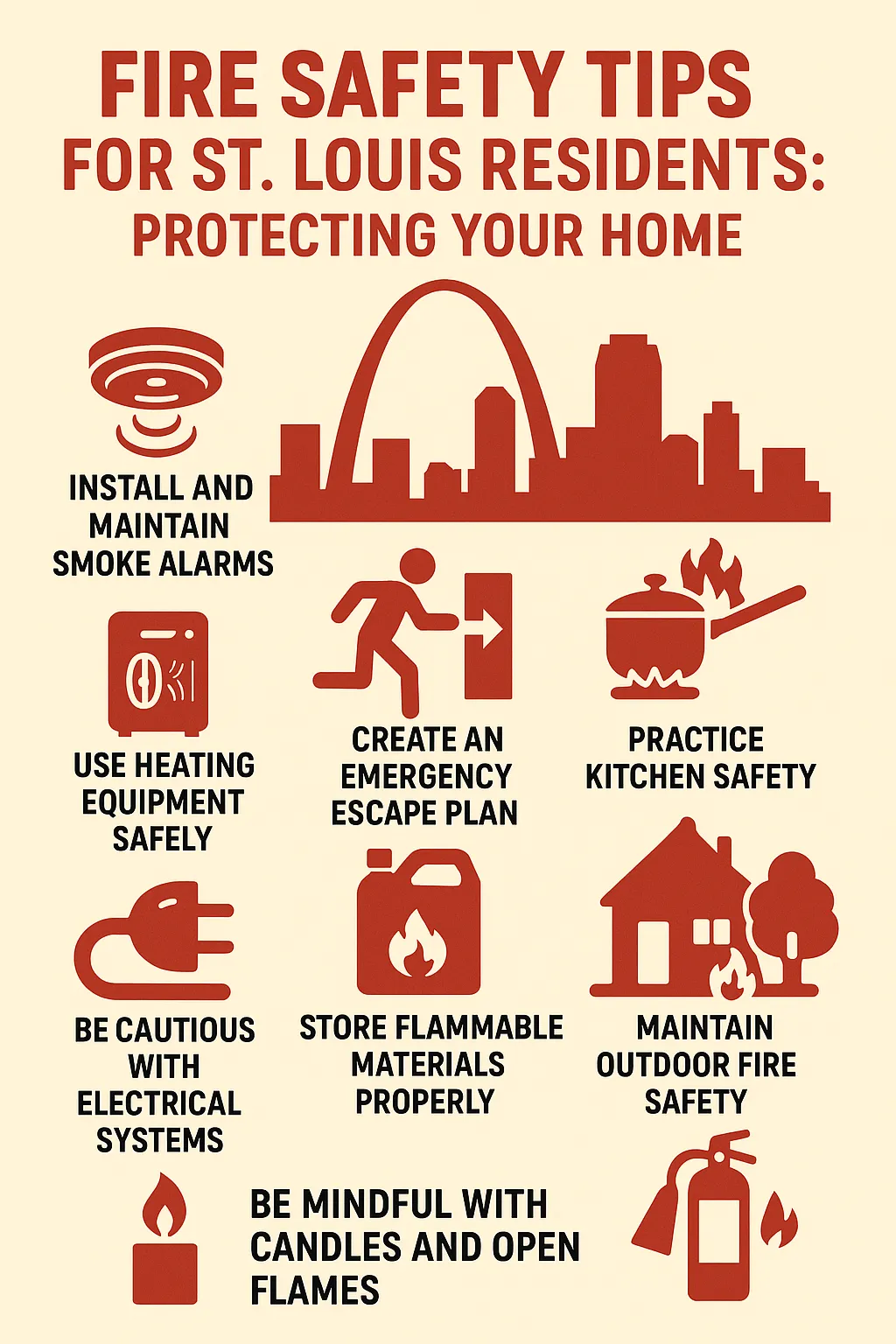
Fire Safety Tips for St. Louis Residents: Protecting Your Home
Fire Safety Tips for St. Louis Residents: Protecting Your Home
Fire safety is essential for every homeowner, especially in St. Louis, where seasonal weather changes and aging infrastructure can increase fire risks. By taking proactive measures, you can help safeguard your family and property from the devastating effects of fires. Here are key fire safety tips specifically tailored for St. Louis residents.
1. Install and Maintain Smoke Alarms
Smoke alarms are your first line of defense against fires. Install alarms on every level of your home, inside bedrooms, and outside sleeping areas. Test them monthly and replace batteries at least once a year. Replace the entire unit every 10 years to ensure optimal performance.
2. Create an Emergency Escape Plan
Develop a fire escape plan that includes at least two exits from each room. Practice the plan with your family regularly to ensure everyone knows how to respond during a fire. Designate a safe meeting spot outside the home and ensure everyone can reach it quickly.
3. Use Heating Equipment Safely
During St. Louis winters, heating equipment becomes a common fire hazard. Keep flammable items at least three feet away from space heaters, fireplaces, and wood stoves. Never leave heating devices unattended, and ensure fireplaces have protective screens to prevent sparks from escaping.
4. Practice Kitchen Safety
Cooking fires are a leading cause of home fires. Never leave cooking unattended, and keep flammable items like towels and paper products away from the stove. Keep a fire extinguisher rated for kitchen fires within reach and know how to use it properly.
5. Be Cautious with Electrical Systems
Older homes in St. Louis may have outdated electrical systems that increase fire risks. Avoid overloading outlets, use surge protectors, and replace damaged cords or wiring immediately. If you notice flickering lights, frequent circuit breaker trips, or burning odors, consult a licensed electrician.
6. Store Flammable Materials Properly
Store gasoline, propane, and other flammable liquids in well-ventilated areas away from heat sources. Use approved containers and keep them out of reach of children. Avoid storing these materials inside your home.
7. Maintain Outdoor Fire Safety
Clear leaves, debris, and other flammable materials from your yard, roof, and gutters. Store firewood away from your home and use fire pits and grills safely, keeping them at least 10 feet from structures. Always fully extinguish fires before leaving them unattended.
8. Install Fire Extinguishers
Place fire extinguishers in key areas of your home, including the kitchen, garage, and near heating equipment. Ensure everyone in your household knows how to use them, following the PASS method: Pull the pin, Aim at the base of the fire, Squeeze the lever, and Sweep from side to side.
9. Be Mindful with Candles and Open Flames
Never leave candles or open flames unattended. Use flameless LED candles as a safer alternative. If you do use traditional candles, keep them away from flammable materials and place them on stable, heat-resistant surfaces.
10. Stay Prepared with Fire Safety Equipment
Keep fire blankets, fire escape ladders, and emergency kits readily available. Ensure everyone in your home knows where they are located and how to use them.
Emergency Preparedness in St. Louis
St. Louis residents should stay informed about local fire safety resources. Familiarize yourself with the St. Louis Fire Department’s services, fire prevention programs, and emergency contact numbers. Participate in community fire safety workshops and stay updated on weather conditions that may increase fire risks.
Conclusion
Taking proactive steps to prevent fires and being prepared for emergencies can help protect your home and loved ones. By following these fire safety tips, St. Louis residents can reduce fire risks and ensure a safer living environment. Regular maintenance, awareness, and preparation are key to safeguarding your property from fire-related incidents.